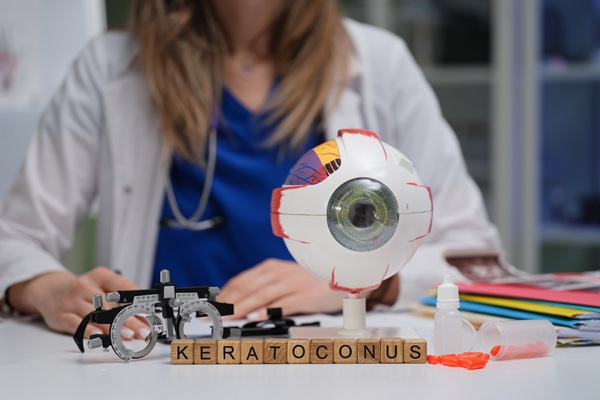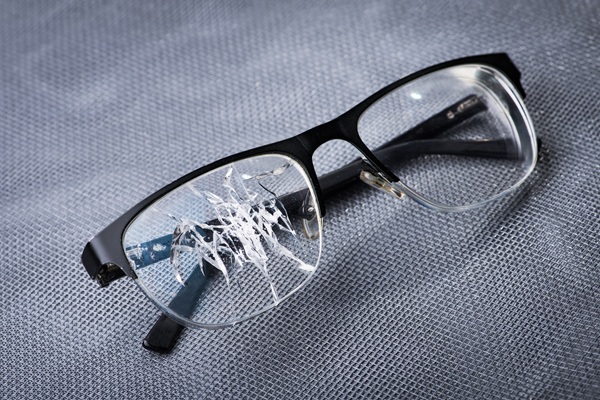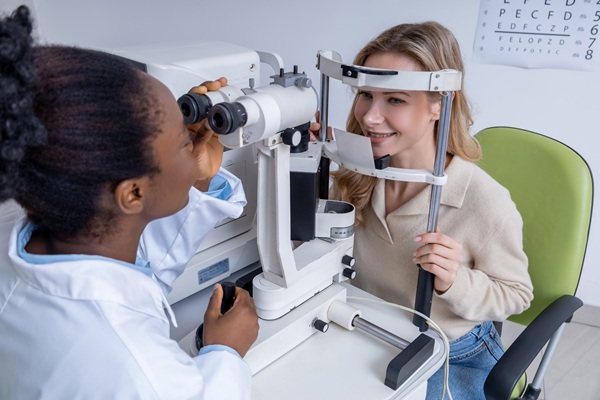Keratoconus Treatment: When to See an Eye Doctor

Keratoconus treatment delivers the best results when symptoms emerge early and an optometrist confirms the diagnosis. Keratoconus thins the cornea and alters its curve, causing blur, ghosting, and light sensitivity. Early care slows progression and restores functional vision. An optometrist uses specialized imaging and targeted therapies to stabilize the cornea and improve clarity. Knowing when to schedule a visit, what to expect during evaluation, and which options fit each stage helps patients act with confidence.
When to schedule an exam
Keratoconus often starts subtly, so attention to small changes matters. Book an appointment if any of the following signs appear:
- Frequent eyeglass or contact lens prescription changes
- Worsening night glare, halos, or double images
- Persistent eye rubbing from allergies or irritation
- Increasing astigmatism or blurred vision that no longer sharpens with lenses
- Family history of keratoconus or prior diagnosis in one eye
Do not delay if symptoms escalate during adolescence or early adulthood, when corneas tend to change quickly. Early referral protects vision and preserves more options. Parents should watch for frequent squinting in children, and adults should track prescription shifts after eye rubbing or intense allergy seasons, because early patterns foreshadow progression and prompt faster, vision-preserving care.
How an optometrist evaluates keratoconus
An optometrist maps corneal shape with topography and tomography, measures thickness with pachymetry, and checks tear quality. A careful refraction identifies irregular astigmatism, while slit-lamp examination reviews corneal health and contact lens fit. These tests create a stage-based profile that guides timely decisions and tracks progression. Many clinics also track Kmax, posterior elevation, and the Belin ABCD parameters to detect early progression and distinguish keratoconus from other ectasias.
Current treatment options
Keratoconus Treatment focuses on stabilizing the cornea and sharpening vision. For progressive disease, surgeons often perform collagen cross-linking to strengthen corneal fibers and slow further steepening. Optometrists fit rigid gas-permeable or scleral contact lenses to create a smooth optical surface and improve clarity. Some patients benefit from hybrid or piggyback lens designs that enhance comfort and centration. In select cases, specialists place intracorneal ring segments or recommend corneal transplantation when other measures no longer restore safe function.
Daily habits and follow-up
Keratoconus treatment also includes lifestyle steps. Control allergies, break eye-rubbing habits, use preservative-free lubricants, and follow lens hygiene precisely. Address atopy with targeted therapy to reduce itch and inflammation. Schedule regular imaging so the care team can detect subtle changes and adjust the plan quickly. Consistent sleep, UV protection, and balanced screen breaks support stable, comfortable vision.
When to seek urgent care
Sudden pain, a white corneal spot, or a rapid drop in vision may signal corneal hydrops. Seek a same-day evaluation so the team can relieve symptoms, manage swelling, and protect corneal integrity.
The bottom line
With early recognition and coordinated care, Keratoconus treatment preserves independence and visual comfort. Optometrists personalize therapy, monitor progress, and escalate intervention when metrics show change. Prompt questions and regular visits build steady control at every stage. For more information or to schedule an appointment, call our office at (914) 730-9574.
To schedule a consultation, please request an appointment on our website at https://brighteyesny.com or call Bright Eyes Optometry at (914) 730-9574 to arrange an appointment at our New Rochelle office.
Check out what others are saying about our dental services on Yelp: Keratoconus Treatment in New Rochelle, NY.
Recent Posts
Prescription glasses are an important part of clear vision and eye health. However, if you break or damage your glasses, it is important to act quickly to avoid further problems and restore your sight. Fortunately, taking care of damaged prescription glasses as soon as possible can save you time, money, and discomfort.The first step after…
Dry eye may start with mild irritation, but over time, it can begin to interfere with focus, comfort, and even quality of life. An optometrist can help when this condition becomes more than just a temporary annoyance. There are many potential causes of dry eye, including hormonal changes and seasonal allergies. With tools that reveal…
Emergency eye care is essential for preserving vision and preventing long-term damage when unexpected injuries or symptoms occur. As an optometrist, providing immediate attention to urgent eye conditions can significantly impact patient outcomes. Understanding when to seek emergency treatment and what steps to take can help safeguard ocular health.Certain symptoms and injuries require immediate professional…
To keep contact lenses convenient and effective, it is important to take proper care of them, especially in the summer. Increased heat, outdoor activities, and exposure to water can all impact comfort and eye health. Following a few do’s and don’ts makes it possible to enjoy clear vision and protect the eyes all summer long.Summer…


